Abstract
Urine samples were collected from 152 workers (64 men, 88 women) who had been exposed to benzene, 53 workers (men only) exposed to a mixture of benzene and toluene, and 213 non-exposed controls (113 men, 100 women). The samples were analysed for 1,2,4-benzentriol (a minor metabolite of benzene) by high performance liquid chromatography. The time weighted average solvent exposure of each worker was monitored by diffusive sampling technique. The urinary concentration of 1,2,4-benzentriol related linearly to the intensity of exposure to benzene both in men and women among workers exposed to benzene, and was suppressed by toluene co-exposure among male workers exposed to a mixture of benzene and toluene. A cross sectional balance study in men at the end of the shift of a workday showed that only 0.47% of benzene absorbed will be excreted into urine as 1,2,4-benzenetriol, in close agreement with previous results in rabbits fed benzene. The concentration of 1,2,4-benzenetriol in urine was more closely related to the concentration of quinol than that of catechol. The fact that phenol and quinol, but not catechol, are precursors of 1,2,4-benzentriol in urine was further confirmed by the intraperitoneal injection of the three phenolic compounds to rats followed by urine analysis for 1,2,4-benzenetriol.
Full text
PDF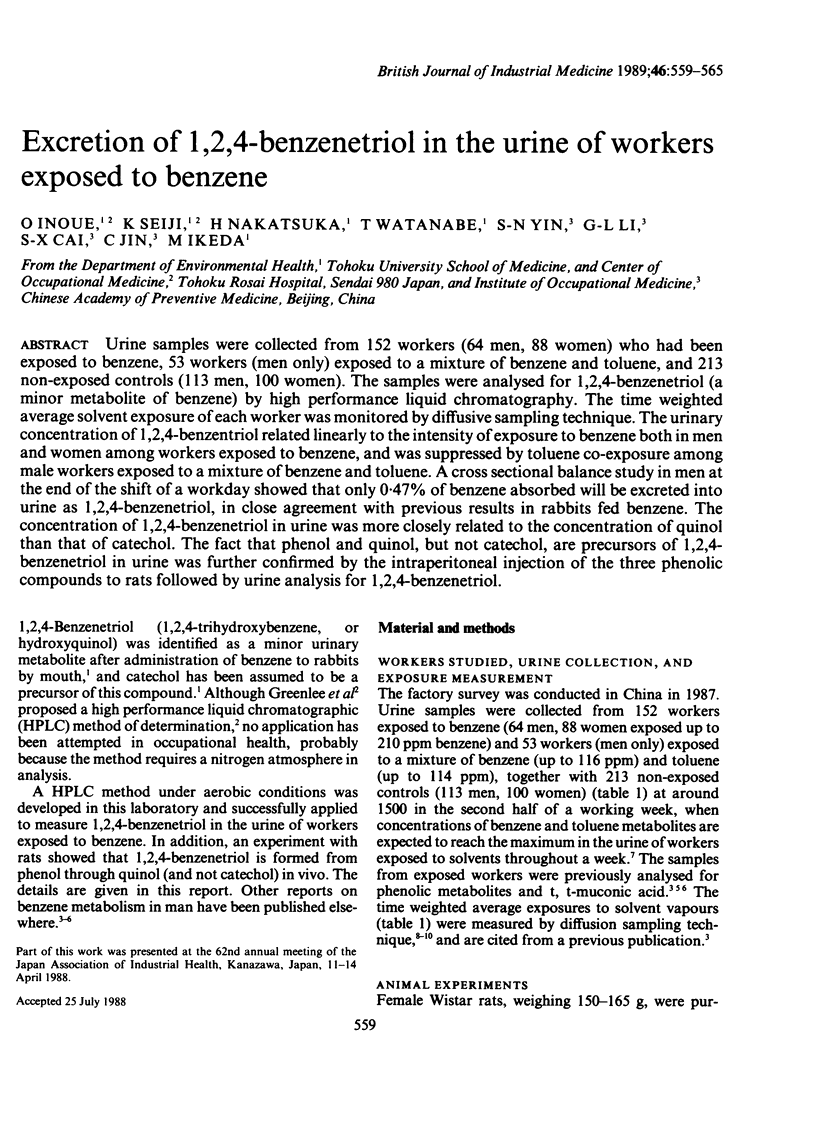
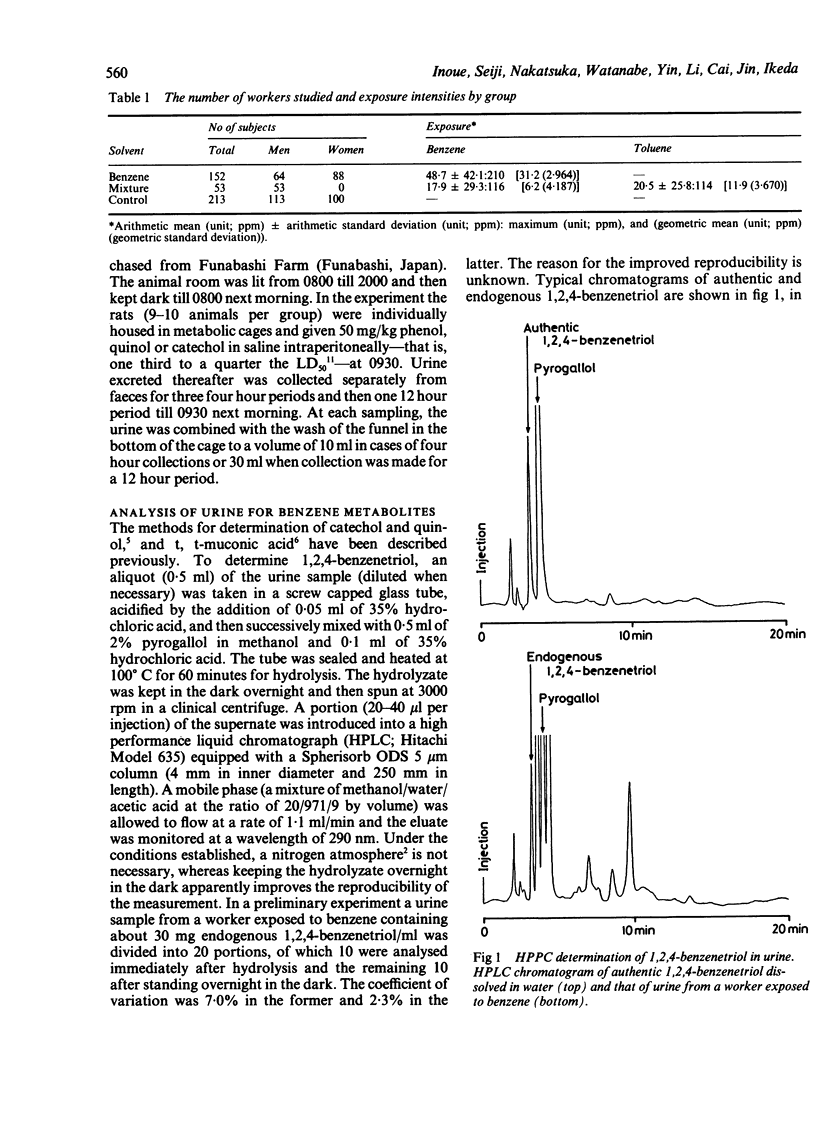
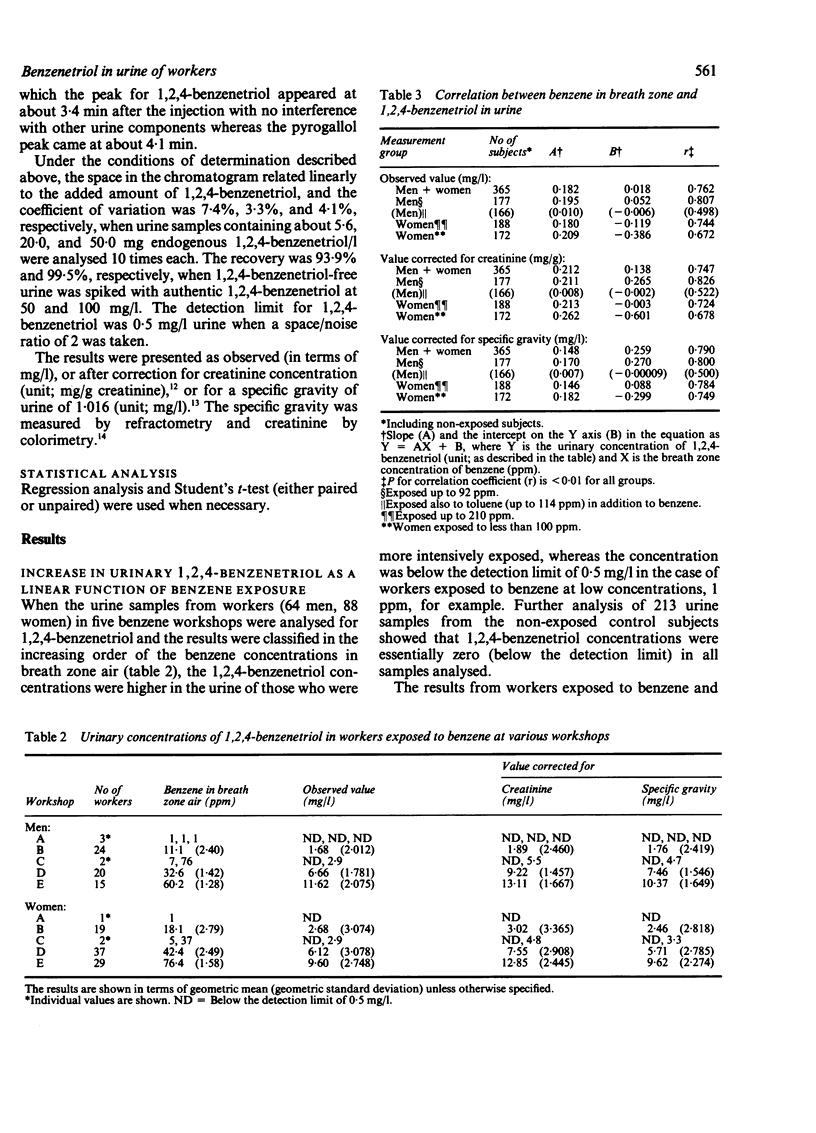
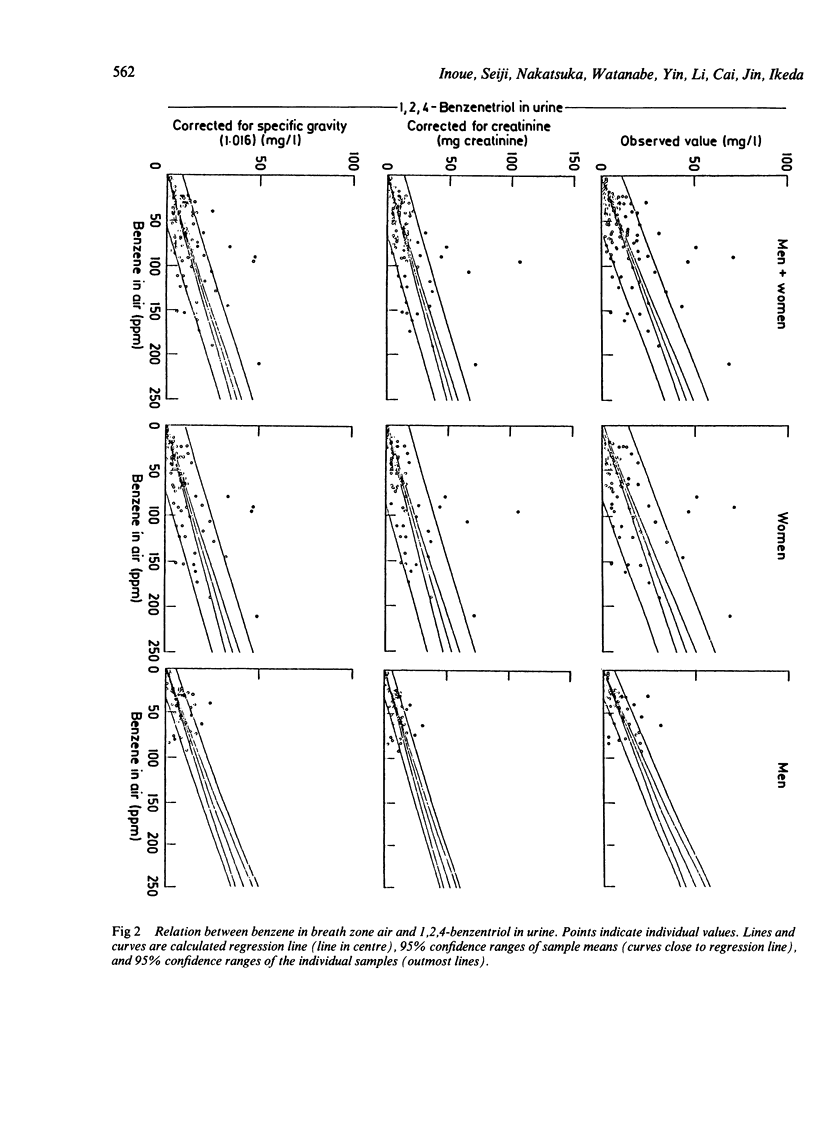
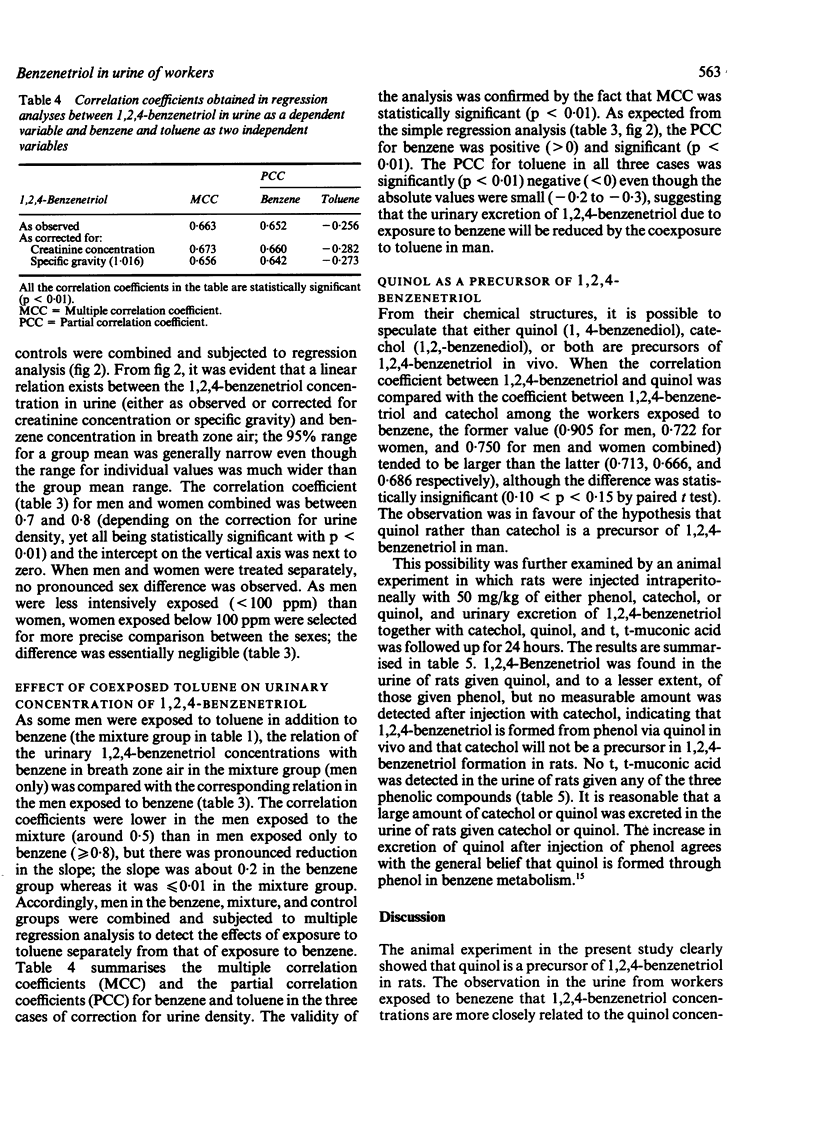
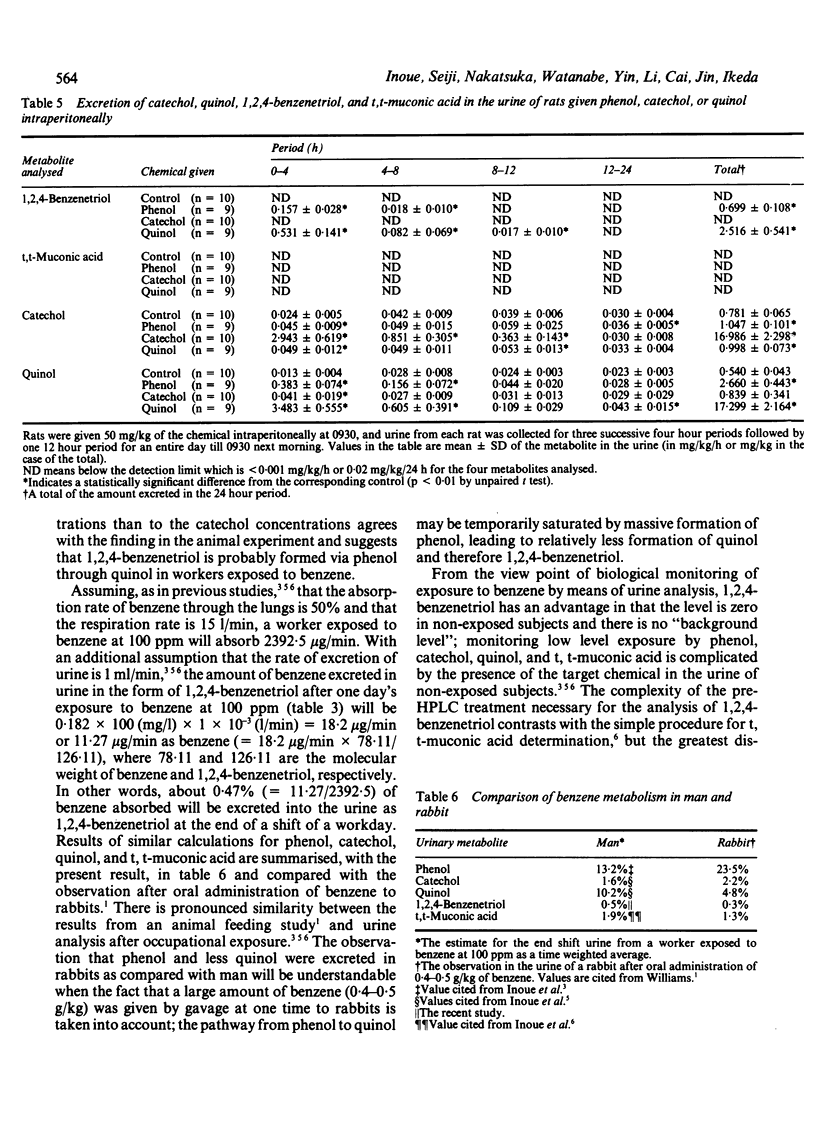
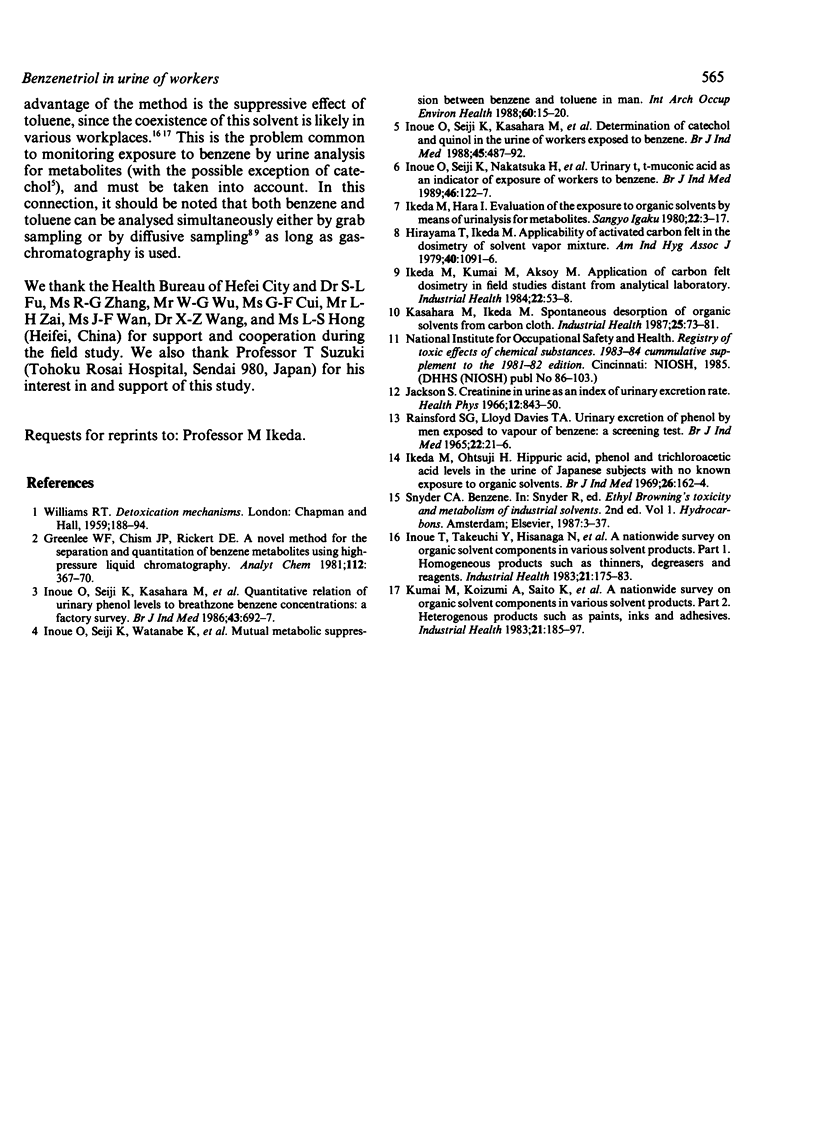
Selected References
These references are in PubMed. This may not be the complete list of references from this article.
- Greenlee W. F., Chism J. P., Rickert D. E. A novel method for the separation and quantitation of benzene metabolites using high-pressure liquid chromatography. Anal Biochem. 1981 Apr;112(2):367–370. doi: 10.1016/0003-2697(81)90307-9. [DOI] [PubMed] [Google Scholar]
- Hirayama T., Ikeda M. Applicability of activated carbon felt to the dosimetry of solvent vapor mixture. Am Ind Hyg Assoc J. 1979 Dec;40(12):1091–1096. doi: 10.1080/15298667991430749. [DOI] [PubMed] [Google Scholar]
- Ikeda M., Hara I. [Evaluation of the exposure to organic solvents by means of urinalysis for metabolites (author's transl)]. Sangyo Igaku. 1980 Jan;22(1):3–17. doi: 10.1539/joh1959.22.3. [DOI] [PubMed] [Google Scholar]
- Ikeda M., Kumai M., Aksoy M. Application of carbon felt dosimetry to field studies distant from analytical laboratory. Ind Health. 1984;22(1):53–57. doi: 10.2486/indhealth.22.53. [DOI] [PubMed] [Google Scholar]
- Ikeda M., Ohtsuji H. Hippuric acid, phenol, and trichloroacetic acid levels in the urine of Japanese subjects with no known exposure to organic solvents. Br J Ind Med. 1969 Apr;26(2):162–164. doi: 10.1136/oem.26.2.162. [DOI] [PMC free article] [PubMed] [Google Scholar]
- Inoue O., Seiji K., Kasahara M., Nakatsuka H., Watanabe T., Yin S. G., Li G. L., Cai S. X., Jin C., Ikeda M. Determination of catechol and quinol in the urine of workers exposed to benzene. Br J Ind Med. 1988 Jul;45(7):487–492. doi: 10.1136/oem.45.7.487. [DOI] [PMC free article] [PubMed] [Google Scholar]
- Inoue O., Seiji K., Kasahara M., Nakatsuka H., Watanabe T., Yin S. G., Li G. L., Jin C., Cai S. X., Wang X. Z. Quantitative relation of urinary phenol levels to breathzone benzene concentrations: a factory survey. Br J Ind Med. 1986 Oct;43(10):692–697. doi: 10.1136/oem.43.10.692. [DOI] [PMC free article] [PubMed] [Google Scholar]
- Inoue O., Seiji K., Nakatsuka H., Watanabe T., Yin S. N., Li G. L., Cai S. X., Jin C., Ikeda M. Urinary t,t-muconic acid as an indicator of exposure to benzene. Br J Ind Med. 1989 Feb;46(2):122–127. doi: 10.1136/oem.46.2.122. [DOI] [PMC free article] [PubMed] [Google Scholar]
- Inoue O., Seiji K., Watanabe T., Kasahara M., Nakatsuka H., Yin S. N., Li G. L., Cai S. X., Jin C., Ikeda M. Mutual metabolic suppression between benzene and toluene in man. Int Arch Occup Environ Health. 1988;60(1):15–20. doi: 10.1007/BF00409373. [DOI] [PubMed] [Google Scholar]
- Inoue T., Takeuchi Y., Hisanaga N., Ono Y., Iwata M., Ogata M., Saito K., Sakurai H., Hara I., Matsushita T. A nationwide survey on organic solvent components in various solvent products: Part 1. Homogeneous products such as thinners, degreasers and reagents. Ind Health. 1983;21(3):175–183. doi: 10.2486/indhealth.21.175. [DOI] [PubMed] [Google Scholar]
- Jackson S. Creatinine in urine as an index of urinary excretion rate. Health Phys. 1966 Jun;12(6):843–850. doi: 10.1097/00004032-196606000-00014. [DOI] [PubMed] [Google Scholar]
- Kasahara M., Ikeda M. Spontaneous desorption of organic solvents from carbon cloth. Ind Health. 1987;25(2):73–81. doi: 10.2486/indhealth.25.73. [DOI] [PubMed] [Google Scholar]
- Kumai M., Koizumi A., Saito K., Sakurai H., Inoue T., Takeuchi Y., Hara I., Ogata M., Matsushita T., Ikeda M. A nationwide survey on organic solvent components in various solvent products: Part 2. Heterogeneous products such as paints, inks and adhesives. Ind Health. 1983;21(3):185–197. doi: 10.2486/indhealth.21.185. [DOI] [PubMed] [Google Scholar]
- RAINSFORD S. G., DAVIES T. A. URINARY EXCRETION OF PHENOL BY MEN EXPOSED TO VAPOUR OF BENZENE: A SCREENING TEST. Br J Ind Med. 1965 Jan;22:21–26. doi: 10.1136/oem.22.1.21. [DOI] [PMC free article] [PubMed] [Google Scholar]


